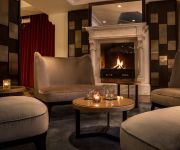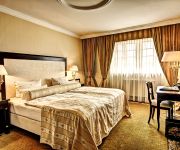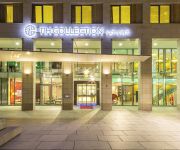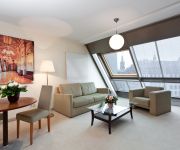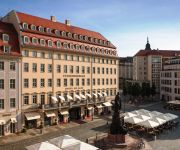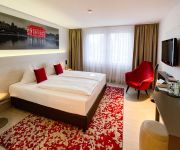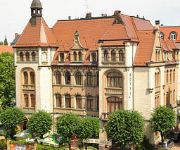Safety Score: 3,0 of 5.0 based on data from 9 authorites. Meaning we advice caution when travelling to Germany.
Travel warnings are updated daily. Source: Travel Warning Germany. Last Update: 2024-08-13 08:21:03
Discover Strehlen
The district Strehlen of Dresden in Saxony is a district in Germany about 105 mi south of Berlin, the country's capital city.
Looking for a place to stay? we compiled a list of available hotels close to the map centre further down the page.
When in this area, you might want to pay a visit to some of the following locations: Bannewitz, Kreischa, Moritzburg, Ottendorf-Okrilla and Pirna. To further explore this place, just scroll down and browse the available info.
Local weather forecast
Todays Local Weather Conditions & Forecast: 3°C / 37 °F
| Morning Temperature | 0°C / 32 °F |
| Evening Temperature | 2°C / 35 °F |
| Night Temperature | 0°C / 33 °F |
| Chance of rainfall | 0% |
| Air Humidity | 70% |
| Air Pressure | 1002 hPa |
| Wind Speed | Moderate breeze with 13 km/h (8 mph) from East |
| Cloud Conditions | Scattered clouds, covering 30% of sky |
| General Conditions | Rain and snow |
Friday, 22nd of November 2024
1°C (34 °F)
0°C (32 °F)
Snow, moderate breeze, broken clouds.
Saturday, 23rd of November 2024
2°C (36 °F)
2°C (35 °F)
Light snow, moderate breeze, broken clouds.
Sunday, 24th of November 2024
11°C (51 °F)
11°C (52 °F)
Moderate rain, moderate breeze, overcast clouds.
Hotels and Places to Stay
Gewandhaus Dresden Autograph Collection
Suitess
Ferienwohnung 2 & 5 & 6
Innside
Dormero Hotel Dresden City
NH Collection Dresden Altmarkt
Aparthotel Altes Dresden
Steigenberger Hotel de Saxe
Wyndham Garden
Artushof
Videos from this area
These are videos related to the place based on their proximity to this place.
Straßenbahn am Fetscherplatz in Dresden
Zu den Zeiten, wo die Linie 10 und 12 am Fetscherplatz wendeten habe ich auch ein paar Videos gedreht. Hier zeige ich grade NGT8DD 2714 auf Linie 10.
Swan sib safeguarding their abused and injured young swan (dramatic)
Swans at the swan pond in Dresden's neglected "Großer Garten" park. Recorded with a SONY DSCHX20V compact camera. The park has three swan lakes there and are located in the middle - north...
Swans and seaguls with children
Swans at the swan pond in Dresden's neglected "Großer Garten" park. Recorded with a SONX DSCHX20V compact camera. The park has three swan lakes there and are...
Straßenbahn am Fetscherplatz in Dresden
Zu den Zeiten, wo die Linie 10 und 12 am Fetscherplatz wendeten habe ich auch ein paar Videos gedreht. Hier zeige ich grade NGTD8DD 2624 auf Linie 12.
Für manche Radfahrer gelten keine roten Ampeln.
Heute in Dresden am Wasaplatz wartete ich an der roten Ampel, auf freie Fahrt. Ich traute meinen Augen kaum, als ein Fahrradfahrer das rote Licht der Ampel ignorierte. Aber vielleicht hatte...
Videos provided by Youtube are under the copyright of their owners.
Attractions and noteworthy things
Distances are based on the centre of the city/town and sightseeing location. This list contains brief abstracts about monuments, holiday activities, national parcs, museums, organisations and more from the area as well as interesting facts about the region itself. Where available, you'll find the corresponding homepage. Otherwise the related wikipedia article.
Transparent Factory
Transparent Factory is the English name of an automobile production plant owned by German carmaker Volkswagen, designed by architect Gunter Henn, and opened in 2002. The original German name is Gläserne Manufaktur (factory made of glass, literally vitreous manufactory). Both the German and English names are a word play on the double meaning of transparent and glassy, referring to both optical transparency and transparency of the production process.
Großer Garten
The Großer Garten is a baroque style park in Dresden. It is oblong in shape and covers an area of about 2 km² in a central location of the city. Established in 1676, it has been a public garden since 1814. Pathways and avenues are arranged symmetrically throughout its area. A central feature of the park is the Sommerpalais. Established outside the old walls of the city, the park was encompassed by the significant growth of the urban area in the second half of the 19th century.
Albertinum
The Albertinum is a modern art museum. The sandstone-clad Renaissance Revival building is located on Brühl's Terrace in the historic center of Dresden, Germany. It is named after King Albert of Saxony. The Albertinum hosts the New Masters Gallery (Galerie Neue Meister) and the Sculpture Collection (Skulpturensammlung) of the Dresden State Art Collections. The museum presents both paintings and sculptures from Romanticism to the present, covering a period of some 200 years.
Saxon State Library
The Saxon State Library (full name in German: Sächsische Landesbibliothek – Staats- und Universitätsbibliothek Dresden), abbreviated SLUB Dresden, is located in Dresden, Germany. It is both the regional library for the German State of Saxony as well as the academic library for the Dresden University of Technology (German: Technische Universität Dresden). It was created in 1996 through the merger of the Saxon State Library (SLB) and the State and University Library Dresden (SUBD).
New Synagogue (Dresden)
The New Synagogue in Dresden was completed in 2001 and designed by architects Rena Wandel-Hoefer and Wolfgang Lorch. It was built on the same location as the Semper Synagogue (1839–1840) designed by Gottfried Semper, which was destroyed in 1938, during the Kristallnacht. The boundary wall of the New Synagogue incorporates the last remaining fragments of Semper's original building.
Heinz-Steyer-Stadion
The Heinz-Steyer-Stadion is a Football and athletics stadium in Dresden, which is currently used by the Dresdner SC. It has a capacity of about 30,000, but is currently restricted to about 5,000 for soccer matches (although it had attendances of more than 50,000 people in the 1930s). It was also the first stadium of Dynamo Dresden. It was the venue for Dynamo's first Inter-Cities Fairs Cup match, against Rangers.
Semper Synagogue
The Semper Synagogue, also known as the Dresden Synagogue, was built in 1838-40 for the Jewish community of Dresden by Gottfried Semper. It was an early example of the Moorish Revival style of synagogue architecture. While the exterior was Romanesque, its interior featured the richly ornamented interior that was to become the hallmark of Moorish Revival architecture. The elaborate Arabic-style interior had a two-tiered balcony supported by columns copied from the Alhambra.
University Hospital Dresden
The University Hospital "Carl Gustav Carus", (Universitätsklinikum Dresden) is a statutory body of the Free State of Saxony and the largest hospital of the Saxon capital Dresden. It is the teaching hospital of the Dresden University of Technology (TU Dresden). Until 1 October 1993, the Clinical Centre together with the Faculty of Medicine at the TU Dresden constituted the Medical Academy. In habitual language use, the abbreviation MedAk is still common.
Botanischer Garten der Technischen Universität Dresden
The Botanischer Garten der Technischen Universität Dresden (3.25 hectares), also known as the Botanischer Garten Dresden or Dresden Botanical Garden, is a botanical garden maintained by the Dresden University of Technology. It is located in the north-west section of the Großer Garten at Stübelallee 2, Dresden, Saxony, Germany. It is open daily without charge.
Dresden park railway
The Dresden park railway is a 381 minimum gauge railway in Dresden, Germany. The line opened in 1950 and has previously been known as the Kindereisenbahn and the Pioniereisenbahn. As these names suggest, the line is largely operated by children, and is a survivor of the many children's railways that were built in the former Eastern Bloc countries.
Dresden Zoo
Dresden Zoo, or Zoo Dresden, is a zoo situated in the city of Dresden in Germany. It was opened in 1861, making it Germany's fourth oldest zoo. It was originally designed by Peter Joseph Lenné. The zoo is located on the southern edge of the Großer Garten (Great Garden), a large city centre park. The zoo houses about 3000 animals of almost 400 species, especially Asian animals.
Dresden City Museum
Dresden City Museum (Stadtmuseum Dresden) is the central city museum for the German city of Dresden. Its displays tell the 800-year story of the city and is the largest and most important of the Dresden State Museums (Städtischen Museen Dresden). Its art collections split off in 2000 to form the Dresden City Art Gallery, but both the Art Gallery and the Museum are housed in Dresden's Landhaus.
Landhaus (Dresden)
The Landhaus is a historic building in Dresden, eastern Germany. Designed to house the Saxony region's Landstand, it was built in the Baroque style between 1770 and 1776 by Friedrich August Krubsacius on the site of the former Palais Flemming-Sulkowski. In September 1775 the Obersteuerkollegium moved into it and in October the Landstand first sat there. It now houses the Dresden City Museum and Dresden City Art Gallery.
Palais Flemming-Sulkowski
The Palais Flemming-Sulkowski was a Baroque city mansion in Dresden, eastern Germany. It stood on the Inneren Pirnaischen Gasse, on the site now occupied by the city's Landhaus.
Dresden City Art Gallery
The Dresden City Art Gallery (Städtische Galerie Dresden - Kunstsammlung) is the city art collection of Dresden, housed in the city's Landhaus. It was formed by the 19th and 20th century artworks in the Dresden City Museum, split off from the Museum and given a separate display in 2000. In 2002 Dr. Gisbert Porstmann became its founding director and in 2005 the City Art Gallery officially opened.
Glücksgas Stadium
Glücksgas Stadium is a football stadium in Dresden, Saxony. It is the current home of Dynamo Dresden. The facility had previously been known as the Rudolf-Harbig-Stadion, but in December 2010, the naming rights were sold to Glücksgas, a Bavarian energy company. Sports facilities have existed on the physical site of the stadium since 1874, and the site noted an attendance of 270,000 people during the 1885 festival.
All Saints Church, Dresden
All Saints Church (Allerheiligenkirche) was an Anglican church on Wiener Straße, Ecke Beuststraße, in Dresden. It was in the Early English Period of Neo-Gothic.
Kaiserpalast
This article is about the palace in Dresden. "Kaiserpalast" may also refer to the Palais du Rhin. The Kaiserpalast was a five-storey neo-Baroque building in Dresden, which stood on the north side of the Pirnaischer Platz between Moritzring and Amalienstraße. It was built between 1895 and 1897 as the Geschäftshaus Ilgen by the architects Schilling und Graebner for the businessman Hermann Ilgen. It had one tower and on its gable were statues by Hans Hartmann-MacLean.
Pirnaischer Platz
Pirnaischer Platz is a square in Dresden, Germany. It is the site of the city's Landhaus.
Ehrlichsche Gestiftskirche
The Ehrlichsches Gestift was a historicist church building in Dresden. It was built in 1907 on Stübelplatz to replace the Ehrlichsches Gestift's older church (Lazarettkirche) on Wettiner Platz, which had been demolished in 1897 to build the new Jakobikirche. It survived the Second World War but was demolished in August 1951.
Erlöserkirche (Dresden)
The Erlöserkirche (Church of the Redeemer) was a Protestant Neo Gothic church building in Dresden. It was built by from 1878 to 1880 by Gotthilf Ludwig Möckel, wrecked in 1945 by bombing and finally demolished in 1961-62.
Johanneskirche (Dresden)
The Johanneskirche was a church in Dresden. It was built from 1874 to 1878 to designs by Gotthilf Ludwig Möckel, making it the first known Neo Gothic building in the city. It was damaged by bombing in the Second World War and demolished in the 1950s.
Trinitatiskirche (Dresden)
The Trinitatiskirche (Trinity Church) was a church building dedicated to the Holy Trinity in the Johannstadt district of Dresden. It was built from 1891 to 1893. The bombing raids of February 1945 completely burned down its aisle, badly damaged the main walls and parish hall, slightly damaged the bell tower and completely destroyed the roof and interior. The debris began to be removed in 1945 and the tower provisionally repaired in 1950.
Dresden Panometer
The Dresden Panometer is an attraction in Dresden, Germany. It is a panoramic painting inside a former gasometer, showing Dresden as it might have appeared in 1756, accompanied by an exhibition. The Panometer was created in 2006 by the Austrian-born artist Yadegar Asisi, who coined the name as a portmanteau of "panorama" and "gasometer". In 2003 he had opened a Panometer in Leipzig.
German Hygiene Museum
The German Hygiene Museum is a museum in Dresden, Germany. It conceives itself today as a "forum for science, culture and society". It is a popular venue for events and exhibitions, and is among the most visited museums in Dresden, with around 300,000 visitors per year.


